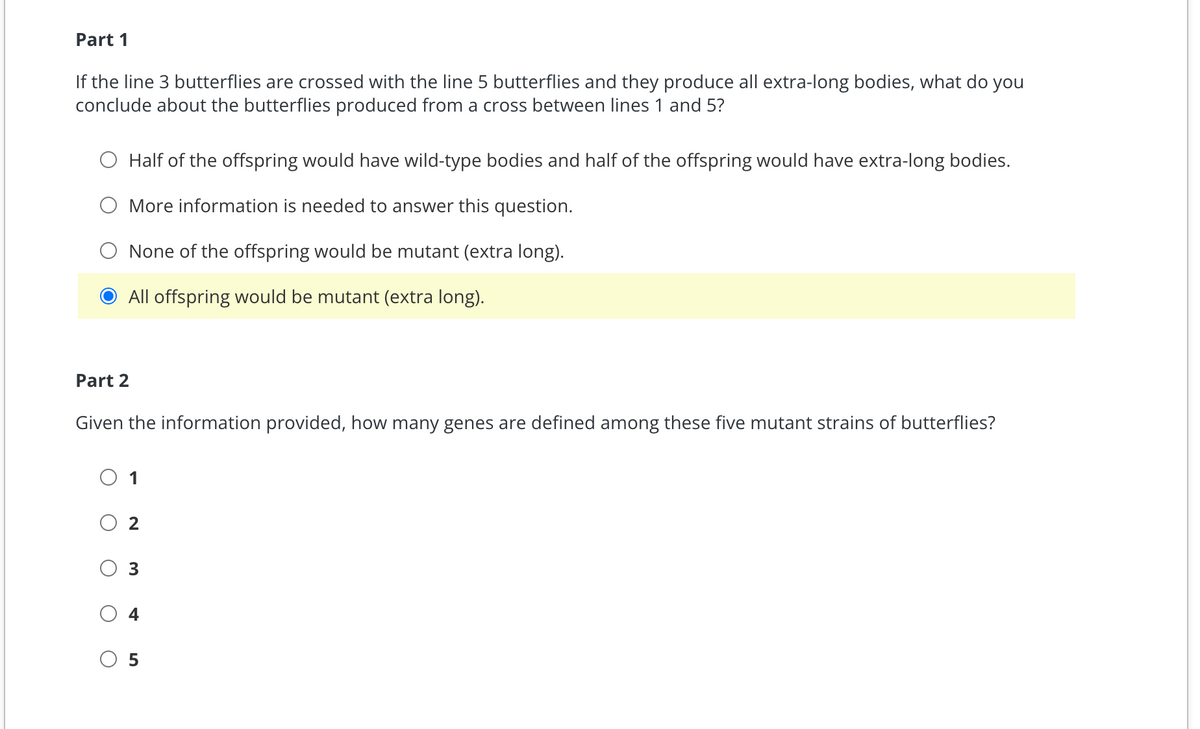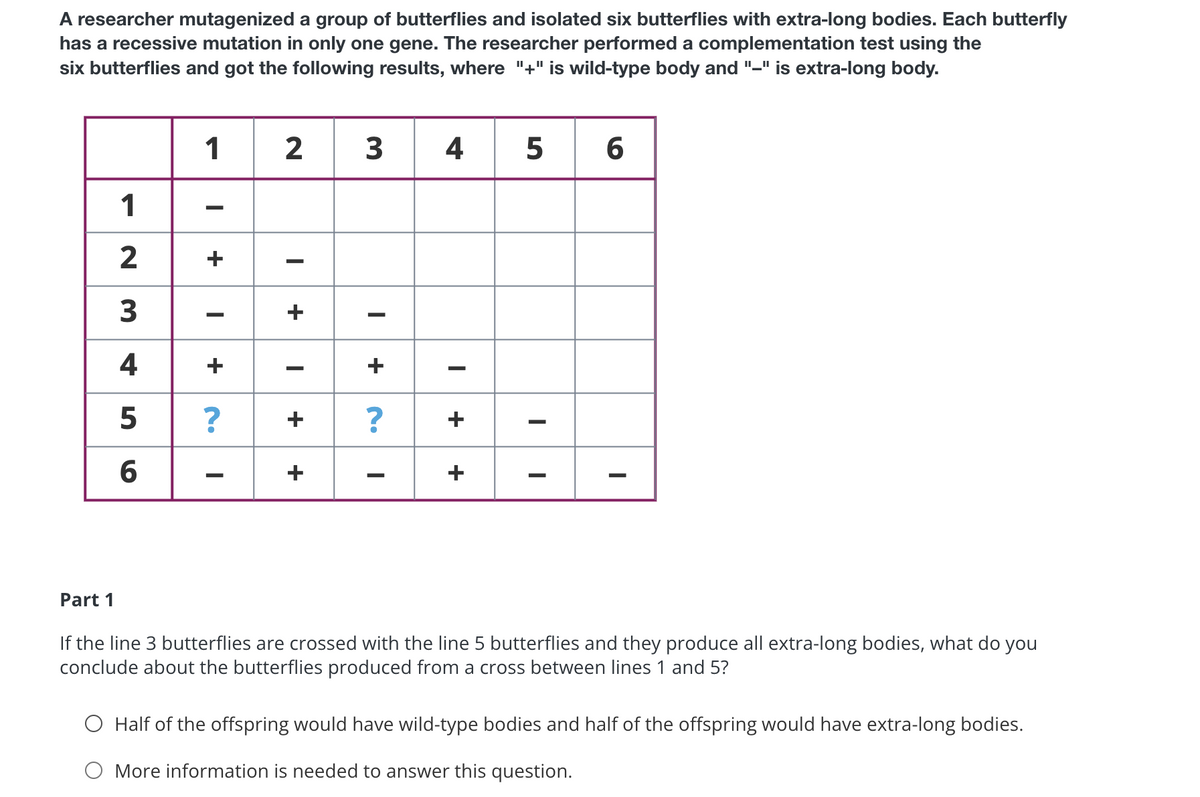3 butterflies are crossed with the line 5 butterflies and they produce all extra-long bodies, what do you about the butterflies produced from a cross between lines 1 and 5? f of the offspring would have wild-type bodies and half of the offspring would have extra-long bodies. re information is needed to answer this question. ne of the offspring would be mutant (extra long). offspring would be mutant (extra long). information provided, how many genes are defined among these five mutant strains of butterflies?
3 butterflies are crossed with the line 5 butterflies and they produce all extra-long bodies, what do you about the butterflies produced from a cross between lines 1 and 5? f of the offspring would have wild-type bodies and half of the offspring would have extra-long bodies. re information is needed to answer this question. ne of the offspring would be mutant (extra long). offspring would be mutant (extra long). information provided, how many genes are defined among these five mutant strains of butterflies?
Human Heredity: Principles and Issues (MindTap Course List)
11th Edition
ISBN:9781305251052
Author:Michael Cummings
Publisher:Michael Cummings
Chapter15: Genomes And Genomics
Section: Chapter Questions
Problem 10QP: What percentage of the DNA in the genome actually corresponds to genes? How much is actually...
Related questions
Question

Transcribed Image Text:Part 1
If the line 3 butterflies are crossed with the line 5 butterflies and they produce all extra-long bodies, what do you
conclude about the butterflies produced from a cross between lines 1 and 5?
Half of the offspring would have wild-type bodies and half of the offspring would have extra-long bodies.
More information is needed to answer this question.
None of the offspring would be mutant (extra long).
All offspring would be mutant (extra long).
Part 2
Given the information provided, how many genes are defined among these five mutant strains of butterflies?
O
4

Transcribed Image Text:A researcher mutagenized a group of butterflies and isolated six butterflies with extra-long bodies. Each butterfly
has a recessive mutation in only one gene. The researcher performed a complementation test using the
six butterflies and got the following results, where "+" is wild-type body and "_" is extra-long body.
Part 1
1
2
3
4
5
6
1 2 3 4 5 6
-
+
-
I
+
—
? +
+
I
+ N.
?
I
1+
+
I
If the line 3 butterflies are crossed with the line 5 butterflies and they produce all extra-long bodies, what do you
conclude about the butterflies produced from a cross between lines 1 and 5?
Half of the offspring would have wild-type bodies and half of the offspring would have extra-long bodies.
O More information is needed to answer this question.
Expert Solution
This question has been solved!
Explore an expertly crafted, step-by-step solution for a thorough understanding of key concepts.
This is a popular solution!
Trending now
This is a popular solution!
Step by step
Solved in 3 steps

Knowledge Booster
Learn more about
Need a deep-dive on the concept behind this application? Look no further. Learn more about this topic, biology and related others by exploring similar questions and additional content below.Recommended textbooks for you

Human Heredity: Principles and Issues (MindTap Co…
Biology
ISBN:
9781305251052
Author:
Michael Cummings
Publisher:
Cengage Learning

Human Heredity: Principles and Issues (MindTap Co…
Biology
ISBN:
9781305251052
Author:
Michael Cummings
Publisher:
Cengage Learning